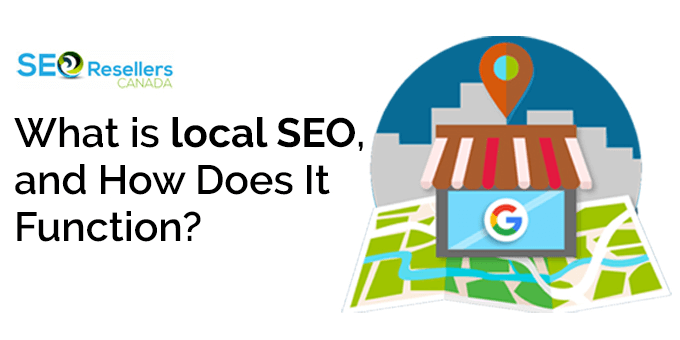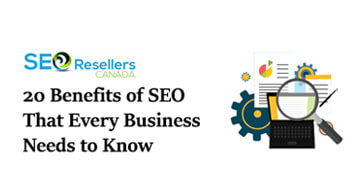The necessity of online exposure has never been more obvious in today’s digital economy when businesses rely on the internet as a lifeline to flourish and expand their reach. It is commonly understood that the virtual sphere has emerged as the principal arena in which businesses fight for the attention of their target audience.
At the heart of this digital battleground lies an engaging debate: SEO (Search Engine Optimization) versus PPC (Pay-Per-Click) advertising. These two pillars of online marketing employ distinct approaches and possess unique strengths and advantages. The recurring question that businesses grapple with is which of these strategies, including considerations like working with a trusted Link Building Company, truly offers the most value.
This blog’s objective is to demystify this ongoing debate. It strives to give you a complete analysis of PPC and SEO. Furthermore, it aims to empower you with the knowledge required to successfully navigate the challenging world of digital marketing.
Our main goal is to arm you with the knowledge needed to make choices that best serve your business goals.
As we embark on this exploration of online visibility and marketing methods, it’s crucial to set the stage with intriguing data and insights that underscore the significance of this debate and its tremendous impact on organizations, including the potential benefits of SEO outsourcing.
1- Understanding SEO
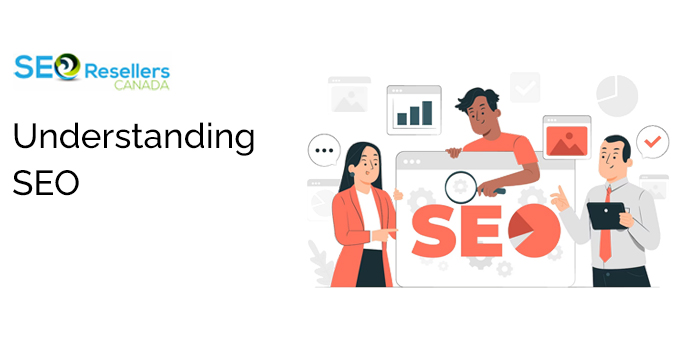
Search Engine Optimization (SEO) is a multifaceted digital marketing strategy that tries to improve a website’s presence in organic search results. It consists of a set of fundamental ideas and practices aimed at improving a website’s ranking in search engine results pages (SERPs). Here’s a closer look at the key elements of SEO and the benefits they give to businesses:
1.1- Explanation of SEO and its core principles
1.1.1- Organic search traffic
Organic search traffic refers to the visitors a website attracts through unpaid search engine results. When users enter queries into search engines like Google, an SEO agency aims to position a website’s pages among the top results. This means that users find the website naturally, without clicking on paid ads.
Stat: According to a study by BrightEdge, organic search is the primary driver of website traffic, accounting for 53.3% of all web traffic in 202.
1.1.2- Content optimization
– Content optimization entails producing excellent, pertinent, and worthwhile material that satisfies the wants and needs of your intended audience. In addition to being user-friendly, this content is also search engine optimized by using strategic keyword placement and responding to frequently asked questions by users.
Stat: HubSpot reports that businesses that publish blog content regularly get 55% more website visitors.
1.1.3- Link building
– Link building is the process of acquiring high-quality backlinks from authoritative websites to your own. These links signal to search engines that your content is trustworthy and valuable. A strong backlink profile can significantly impact your website’s search engine rankings.
Stat: Ahrefs found a strong correlation between the number of referring domains (backlinks from unique websites) and organic search traffic. Websites with more referring domains tend to rank higher in search results.
1.2- Benefits of SEO
1.2.1- Long-term sustainability
Search Engine Optimization (SEO) is a comprehensive digital marketing strategy focused on enhancing a website’s visibility within organic search results. It encompasses a collection of core principles and techniques designed to elevate a website’s position in search engine results pages (SERPs). Let’s delve into the essential components of SEO and the advantages it confers upon businesses:
Stat: As per research conducted by BrightEdge, the typical lifespan of a webpage in the top 10 Google search results spans 2-3 years, underscoring the enduring advantages derived from SEO endeavors.
1.2.2- Credibility and trustworthiness
– Websites that consistently rank well in organic search results are often perceived as more trustworthy and credible by users. SEO agency not only helps you reach a broader audience but also builds your brand’s authority within your industry.
Stat: A study by Search Engine Land found that 75% of users never scroll past the first page of search results, emphasizing the importance of ranking high in organic search.
1.2.3- Cost-effectiveness
– Compared to PPC advertising, SEO is a cost-effective strategy in the long run. While initial optimization may require an investment, ongoing maintenance and content creation can yield significant returns without the recurring costs associated with PPC campaigns.
Stat: According to Statista, the average cost per click (CPC) in Google Ads across all industries was $2.69 in the third quarter of 2020, making PPC a potentially expensive short-term strategy.
2- Understanding PPC
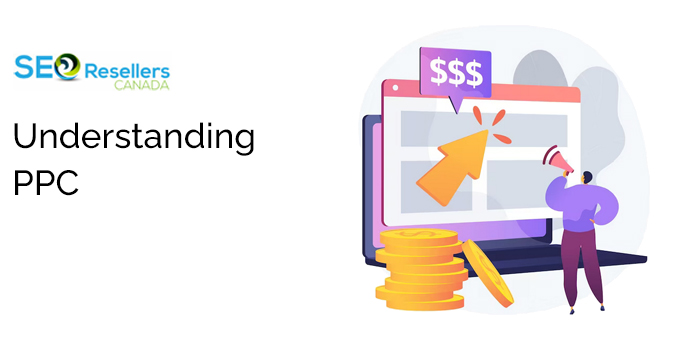
2.1- Explanation of PPC and its core principles
Pay-per-click (PPC) is a digital advertising model where advertisers pay a fee each time one of their ads is clicked. This form of online advertising is based on several core principles:
2.1.1- Paid Advertising
Unlike organic search results, PPC ads are paid placements. Advertisers bid on specific keywords or phrases relevant to their business to have their ads displayed when users search for those terms.
2.1.2- Keyword Targeting
Keywords are the foundation of PPC advertising. Advertisers select the keywords or key phrases they want to target. When a user enters one of these keywords in a search engine, the ad may appear in the search results.
2.1.3- Ad Auction Process
PPC platforms, like Google Ads, use an auction system to determine which ads are displayed when a user searches. The auction considers factors such as bid amount, ad quality, and relevance to determine ad placement.
2.2- Benefits of PPC
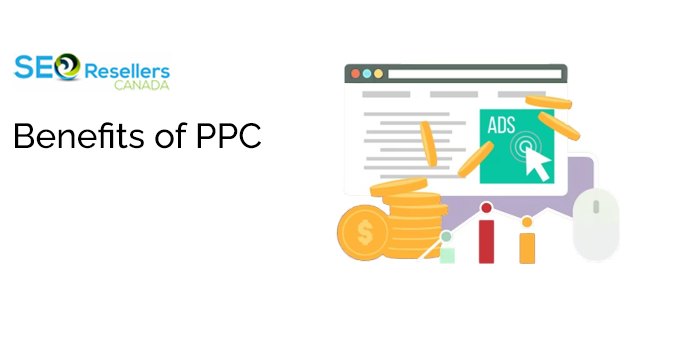
2.2.1- Instantaneous Results
PPC delivers nearly immediate visibility. Once a campaign is configured and approved, ads can begin appearing in search results within mere hours. This is particularly advantageous for businesses seeking rapid exposure and swift outcomes. Google reports that, on average, for every $1 invested in Google Ads, businesses generate $2 in revenue, underscoring the swift return on investment.
2.2.2- Laser-Sharp Targeting
PPC empowers advertisers to finely hone their audience targeting based on a multitude of factors such as location, device, demographics, and even the time of day. This level of precision ensures that ads are displayed to the most pertinent and potentially interested users. Remarkably, 64.6% of consumers click on Google ads when actively searching to make an online purchase.
2.2.3- Measurable Return on Investment (ROI)
A standout advantage of PPC is its capacity for real-time tracking and measurement. Advertisers can continuously monitor their campaign’s performance, scrutinizing metrics like clicks, impressions, conversions, and the cost per conversion. This data equips businesses to accurately gauge the ROI of their PPC endeavors. On average, businesses generate $3 in revenue for every $1.60 they invest in Google Ads.
These advantages establish PPC as an efficacious tool for businesses striving to channel prompt, highly targeted traffic to their websites and meticulously evaluate the impact of their advertising campaigns.
3- Comparing SEO and PPC
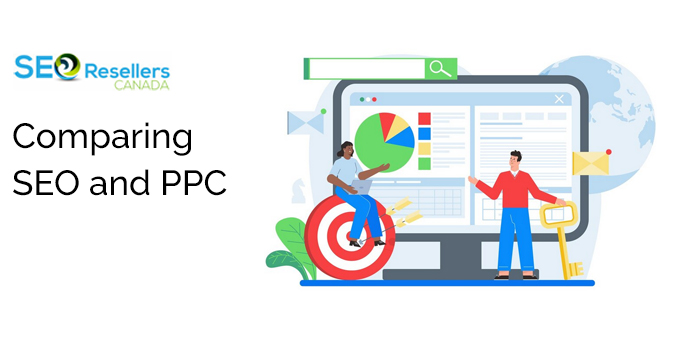
When it comes to comparing SEO and PPC, several key factors play a pivotal role in determining which strategy provides the most value for businesses. Let’s dive into the statistics and insights related to these aspects:
3.1- Cost
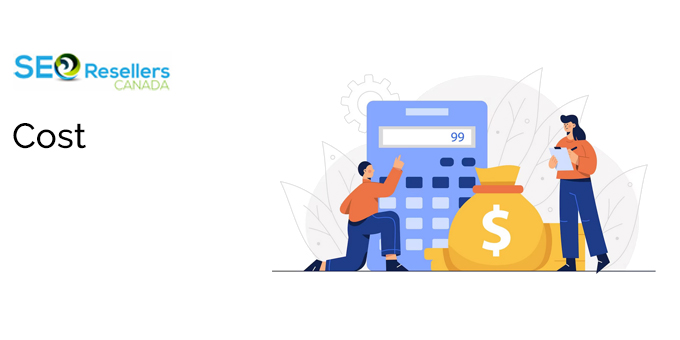
3.1.1- Upfront vs. Ongoing Costs
– SEO typically involves upfront costs associated with optimizing a website, creating high-quality content, and building backlinks. According to a survey by Ahrefs, the average monthly cost of SEO services can range from $500 to $5,000 or more, depending on the level of competition and the scope of the project.
– In contrast, PPC advertising requires businesses to pay for each click on their ads. The cost per click (CPC) varies widely by industry and keyword. On average, the CPC across all industries on Google Ads is $2.69, according to WordStream’s industry benchmark data.
3.1.2- ROI Analysis
– Since it generally takes time to see noticeable benefits, SEO services frequently call for patience. Long-term ROI, however, can be significant. 70–80% of consumers reject paid advertisements in favor of organic search results, according to a survey by Search Engine Journal.
– PPC, on the other hand, can result in quicker outcomes. According to Google, for every dollar spent on Google Ads, advertisers generate $2 in revenue on average.
3.2- Speed of Results
3.2.1- SEO's Gradual Growth vs. PPC's Immediate Impact
– SEO is known for its gradual growth. It can take several months to start seeing significant improvements in organic search rankings. On average, it takes about 3-6 months to see noticeable results, according to Moz.
– PPC, in contrast, offers almost immediate results. Once you set up a PPC campaign, your ads can start appearing in search results within minutes, and you can begin driving traffic to your website right away.
3.3- Sustainability
3.3.1- Long-Term Benefits of SEO
– SEO investments can pay off in the long run. According to BrightEdge’s research, organic search drives 53.3% of all website traffic. Over time, as your website climbs in search rankings, the traffic from organic search can become a consistent and sustainable source of visitors.
3.3.2- The Temporary Nature of PPC
– PPC results are temporary and directly tied to your ad spend. When you stop paying for ads, your visibility in search results ceases. A study by WordStream found that the average click-through rate (CTR) for paid search ads is 2%, indicating that PPC results are transient compared to organic search.
3.4- Targeting and Reach
3.4.1- SEO's Broad Reach
– SEO has the advantage of broad reach. Well-optimized websites can attract a wide range of visitors, including those in the early stages of the buyer’s journey who are conducting informational searches.
– Statista reports that Google’s search engine accounted for 92.37% of the global search engine market share as of August 2021, highlighting the extensive reach of organic search results.
3.4.2- PPC's Precise Targeting
– PPC allows for precise targeting based on keywords, demographics, location, and more. This targeted approach can be highly effective for reaching specific audiences.
– WordStream data reveals that the average CTR for ads on the Google Display Network is 0.46%, indicating the potential for reaching a specific and engaged audience through PPC display advertising.
In summary, the choice between SEO and PPC depends on your business goals, budget, and timeline. While SEO offers long-term sustainability and a broad reach, PPC provides immediate results and precise targeting options. Many businesses find value in using both strategies in tandem to maximize their online presence and ROI.
4- Value Metrics
4.1- Defining value in digital marketing
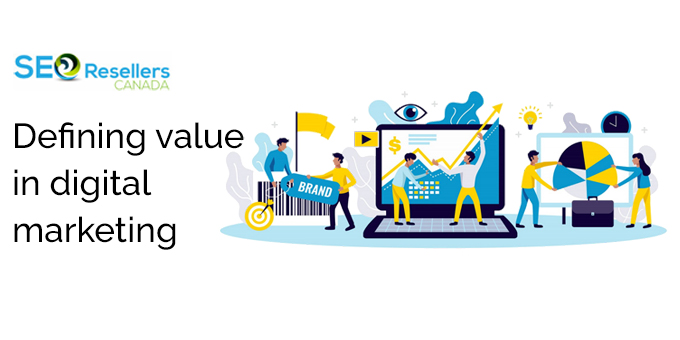
When it comes to measuring the value of your digital marketing efforts, it’s crucial to focus on the metrics that align with your business objectives. These metrics help you understand the impact of your strategies and allocate resources effectively. Here are key performance indicators (KPIs) for both SEO and PPC that provide valuable insights:
4.2- Key performance indicators (KPIs) for SEO
4.2.1- Organic Traffic Growth
Organic traffic growth measures the increase in the number of visitors who arrive at your website through search engine results, without clicking on paid advertisements. It reflects the effectiveness of your SEO efforts in driving relevant visitors to your site.
Stat: On average, websites that invest in SEO see an increase in organic traffic of 20-40% within the first six months.
4.2.2- Keyword Rankings
Keyword rankings assess how well your website ranks in search engine results for specific keywords relevant to your business. Higher rankings for valuable keywords can lead to increased visibility and traffic.
Stat: Websites that rank in the top 3 positions on Google’s search results page for a given keyword capture 75% of the clicks.
4.2.3- Conversion Rates
The percentage of website visitors that complete desired actions, including making a purchase, completing a contact form, or subscribing to a newsletter, is tracked by conversion rates. A greater conversion rate shows that visitors to your website are successfully being converted into leads or customers.
Stat: The average conversion rate for websites is around 2.35%, but top-performing websites can achieve rates exceeding 5%.
4.3- Key performance indicators (KPIs) for PPC
4.3.1- Click-Through Rate (CTR)
CTR measures the percentage of people who click on your PPC ads after seeing them. It reflects the relevance and appeal of your ad copy and targeting. A higher CTR indicates that your ads are compelling and driving traffic.
Stat: The average CTR across all industries in Google Ads is around 3.17%, but industries like dating and finance can have much higher CTRs, averaging around 6-8%.
4.3.2- Quality Score
Quality Score is a metric used in platforms like Google Ads to assess the quality and relevance of your ads and keywords. It impacts your ad’s position and cost per click (CPC). A higher Quality Score can lead to better ad placement and lower costs.
Stat: Advertisers with higher Quality Scores often pay up to 50% less per click compared to advertisers with lower scores.
5- Conclusion
In the SEO vs. PPC dilemma, both methods offer distinct advantages. SEO yields sustainable growth, with an average 20-40% increase in organic traffic within six months, while PPC provides quick results, often with high click-through rates (up to 6-8%) and precise targeting.
The true value lies in combining these strategies. SEO builds credibility over time, while PPC delivers immediate visibility and conversions. Your choice should align with your goals and resources.
In this digital era, online visibility is crucial. Making informed decisions about SEO, PPC, or a blend of both can maximize your digital marketing value and competitiveness. Adapt, analyze, and optimize your strategies to unlock their full potential for your business. Your journey to digital success begins with a tailored strategy aligned with your unique goals and circumstances.













